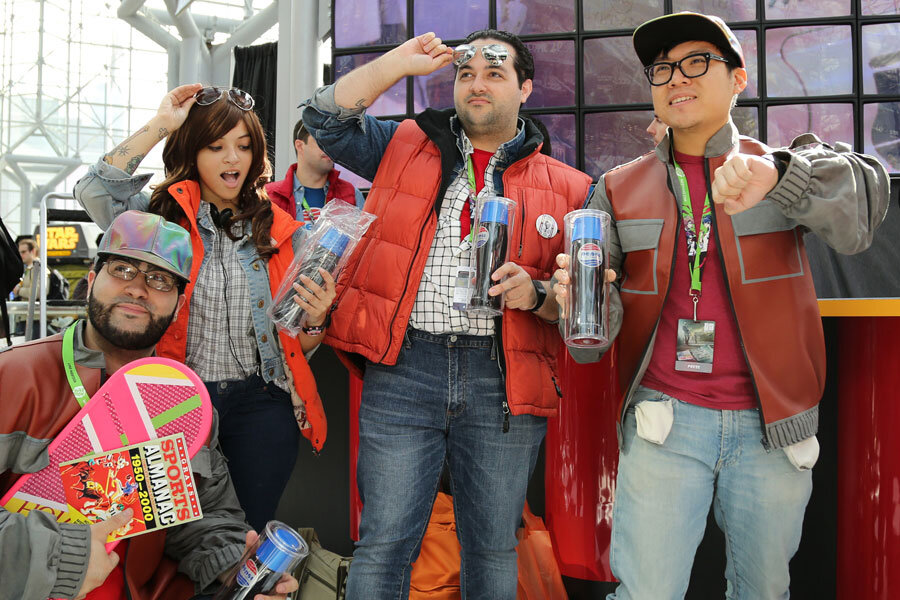'Back to the Future Part II': Did the movie get it right?
Loading...
For the most avid "Back to the Future" fans, Michael J. Fox is expected to roll down the street on a hover board Wednesday, October 21, 2015 at 4:29 p.m.
In the 1989 film "Back to the Future Part II," Fox’s character Marty McFly travels to the date Oct. 21, 2015.
While Marty is reading the headlines of an October 2015 USA Today, viewers catch a glimpse of some headlines. Judging by these headlines, the filmmakers thought the United States would have a female president in 2015, Queen Elizabeth would have passed on the crown to Queen Diana, and someone would have run a three-minute mile.
The film was big at the time, and arguably shaped millions of viewers concepts of the future. After adjusting for inflation and averaging the gross across the entire series, The Atlantic suggests the "Back the the Future" trilogy brought in more at the box office than the Batman, James Bond, Pirates of the Caribbean, and Twilight series.
And while we still don’t have hoverboards like Marty, engineers have certainly tried.
Both Lexus and Hendo have produced hoverboard prototypes, but they only work on specific magnetic surfaces. Proving the popular envy of Marty’s hoverboard technology, Hendo funded a ‘Betaboard’ in August through a Kickstarter campaign that had 3,169 backers pledge a total of $510,590.
John Bell, the film’s visual effects art director, and Bob Gale, who wrote and produced the film, told The New York Times that their futuristic inventions were based off of imagination and not realistic predictions.
“I just started taking stabs at anything from the vehicles, to the hoverboards to the costumes and town square, where Marty lived,” Mr. Bell said.
“We were all just driving to the unknown,” costume designer Joanna Johnston told the Times. “So everyone was going: ‘What about this? What about this? But what about this?’”
“I was told [by director Robert Zemeckis] that people were going to be wearing their athletic clothes all day, which they didn’t then,” Ms. Johnston notes. “And now they do all the time.”
What about the drone dog walker in the film? “We though that was kind of a joke,” Mr. Gale added, “but that’s going to happen.”
And surprisingly, many of the far-fetched, obscure predictions in the film actually have come true.
Video conferencing, self-lacing Nike sneakers, flat-screen TVs, a professional baseball team in Florida, tablet computers, and hands-free video games were all a prediction in the late 1980s, but are common concepts now.
Well, self-lacing Nike sneakers might not be so common, but the company has confirmed they exist.
Although viewers might see the predicted fax machine as an obvious development, “We missed the smartphone completely,” Gale notes.
Pepsi is also celebrating the "Back to the Future" holiday, releasing 6,500 bottles of Marty’s drink of choice in the film – Pepsi Perfect – online Wednesday for $20.15 apiece.
And as for the Chicago Cubs winning the World Series? We can’t know for sure yet, but it is still a possibility.






